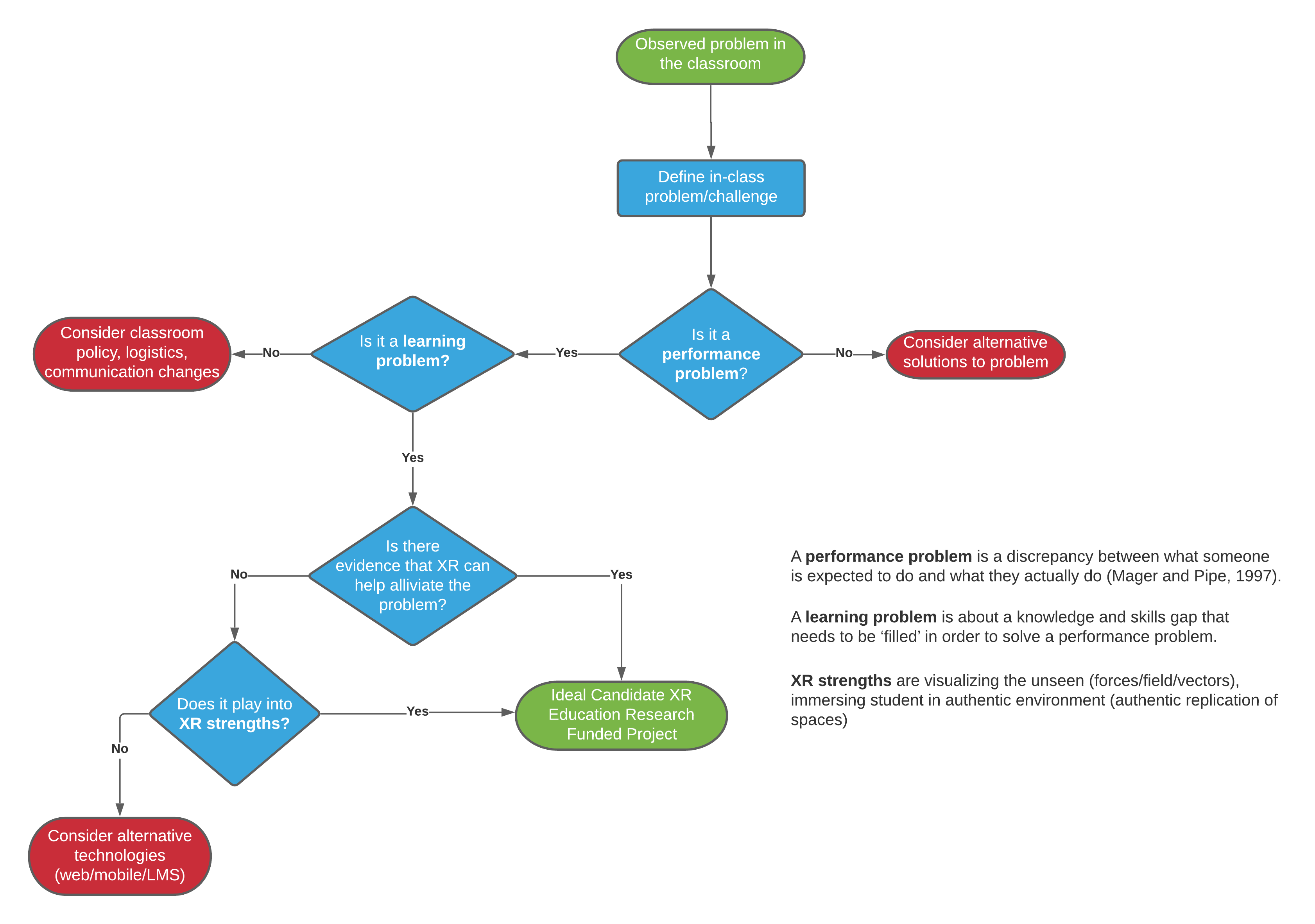Playing to the Strengths of Extended Reality (XR) in Educational Contexts
By Carolyn Giroux (Figure 1 created by Talal Alothman)
The Promise of XR
Implementing XR technology in the classroom could bring many advantages to student learning. First, certain features of XR technology allow for multiple ways to explore the content. Interactive interfaces allow students to access information different from a textbook and XR applications provide easy access to multiple representations of the content such as text, video, interactive graphics, and audio. Second, XR technology can foster independent learning: students can receive targeted feedback, students can choose the order and pace of content, and adaptive features can allow the application to adjust to user input, providing a customized learning experience.
Is XR the Best Solution?
However, many educational technologies can play to these strengths. Furthermore, educational applications that can be deployed on laptop computers or smartphones may be more affordable to implement and more accessible to students in and out of class. It is important that the time and effort required to implement an XR application is not wasted and that the XR application enhances the classroom experience in a way no other technology could. Here, I suggest two arguments for XR over other technologies.
- Increased access to learning experiences. XR applications (such as virtual field trips) can simulate learning experiences that but would normally be inaccessible because of cost, distance, scheduling, or other logistics. An XR experience is not the same as learning in person, but simulated in-person experiences may enhance a more traditional curriculum and increase student engagement.
- Information would be lost without interactive 3D visualization. For some content areas that focus on visualizing phenomena that cannot be seen by the naked eye (such as materials science), 3D visualization allows students to simultaneously access information that would take multiple paper-based representations to convey. Furthermore, XR applications allow for more interaction than the rotation and magnification standard for many computer-based visualizations. XR is more expensive than other ways of visualizing this content so the information provided by 3D visualization(vs 2D) and/or the specific interactive features offered by XR must be important in achieving your learning goals.
This is not an exhaustive list of arguments for the use of XR over other technologies. However, before beginning to implement XR it is important that your team considers the affordances and constraints of different educational technologies and develops a strong argument for using XR.

Figure 1: Is XR Right for Your Project? (Neelen & Kirschner, 2020)
For Further Reading:
National Academies of Sciences, Engineering, and Medicine 2018. How People Learn II: Learners, Contexts, and Cultures. Washington, DC: The National Academies Press. https://doi.org/10.17226/24783.
Note: The author recommends Chapter 8 of this volume for more information on educational technology.
Neelen, M., & Kirschner, P. A. (2020). Evidence-informed learning design: Creating training to improve performance. Kogan Page Publishers.
